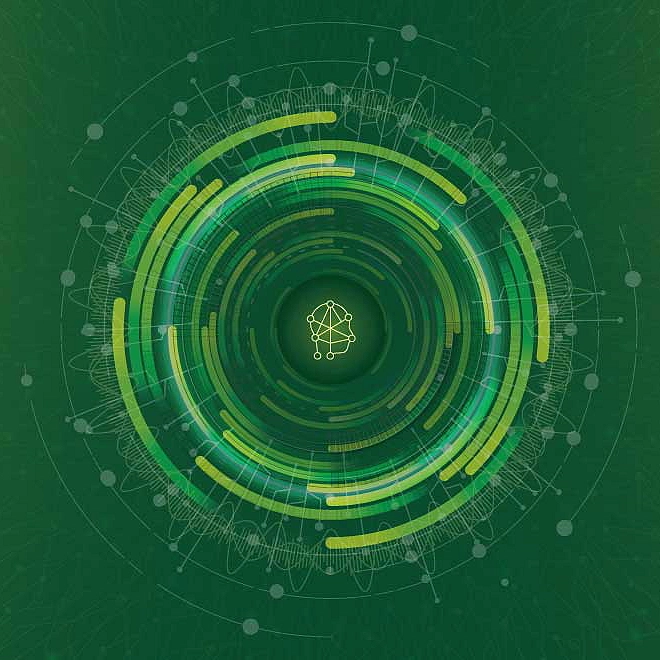Collaboration at a distance
Technology for remote, high-touch scenarios
A lot of work today simply can’t be done well without high-touch collaboration—a challenge when many people are working from home. New tools are helping.
THE pandemic, with an impact lasting far longer than initially expected, is forcing organizations to rethink how their teams can collaborate from a distance. Some widely used digital tools make certain forms of collaboration—such as sharing and editing documents—easy. But other, critically important types of collaboration remain challenging when colleagues are not sharing physical space—or even time zones. Organizations can experiment with a newer breed of tools, some still experimental, that aim to support remote, high-touch collaboration.
Signals
- The time spent by managers and employees in collaborative activities has increased by 50% or more in recent years.1
- Over 40% of American workers were working from home full-time as of June 2020.2
- On average, CEOs expect 36% of their employees to be working remotely in January 2022, up from 13% prepandemic.3
- Multiple companies have implemented permanent work-from-home policies for large portions of their workforce.4
- At least 100 digital remote collaboration products were launched or enhanced in the first eight months of 2020.5
In view but out of sync
“Did he hear what I just said?” “Was that a smirk?” “She’s looking down—is she texting?”
It’s safe to assume these questions cross the minds of many workers during days of endless video calls. The concentration required to process these virtual interactions can be taxing, leaving workers exhausted. But with so many professionals working from home due to the pandemic, it’s imperative that organizations find effective ways for remote workers to collaborate. New technologies are answering this call: From immersive environments to virtualized offices that facilitate casual interactions, organizations may soon have many more options for helping their teams collaborate effectively at a distance.
Collaboration is key—but challenged by remote work
Most organizations accept that effective collaboration is essential for high performance. Apple leaders considered collaboration to be so important that they designed its headquarters building to promote creativity and collaboration.6 Even workers’ perception that they are working collectively, according to a 2014 study, can enhance their performance.7 Thus, collaboration activities are pervasive in the modern office. Indeed, some researchers believe “collaboration is taking over the workplace,” with time spent by managers and employees in collaborative activities increasing by 50% or more in recent years.8 It’s no surprise that “collaboration” is among the soft skills that employers seek most.9
But with the pandemic forcing millions of people to work from home, collaboration has become more challenging. Remote working obscures body language and distorts verbal cues that can be crucial to understanding intent. Formal, scheduled video calls—or more frequent instant messages or texts—are no substitute for quick, spontaneous exchanges of information. Professionals working in sales, customer service, management, design, and other roles in which impromptu and collaborative interactions are integral to the job may be particularly challenged. Some workers feel isolated. Managers are struggling to onboard, integrate, and teach office norms to new staffers, and building and sustaining an organization’s culture has rarely been more difficult.
Even when the crisis is behind us, the need for better remote collaboration will persist.
High-touch collaboration still works best in person
Of course, many, even most collaborative activities don’t require face-to-face interaction. A wide range of digital communication and project management tools supports sharing files, editing documents, and communicating project status.
But other valuable collaborative activities—scrum meetings for coordinating software development, brainstorming sessions to generate product ideas, hallway conversations to quickly exchange useful information—have tended to rely on face-to-face interactions. We call such activities high-touch collaboration.
High-touch collaboration activities are typically synchronous, spontaneous, or sensory. Synchronous means two or more people are present in the moment when the activity is conducted, allowing for a free-flowing exchange of information. Spontaneous means unscheduled, low-overhead interactions that may occur outside the confines of a formally scheduled meeting. Some of the best ideas, and even businesses, started as impromptu thoughts or interactions between colleagues. Sensory refers to the nonverbal communication or body language we unconsciously decipher when interacting with others. Arm positions, posture, and tone of voice can influence how or when others choose to engage with or respond to us.
Leaders can use this simple three-S model to identify the high-touch collaboration activities in their organization that remote working arrangements may impair. Below are some common examples. They are important in our work and the work of many of our clients—and they can be difficult to perform when collaborators are just faces on a screen.
Structured, interactive sessions. Some types of workshops or labs, employing techniques such as design thinking, aim to solve complex problems or help a group achieve consensus on a designated topic. In addition to typically needing a skilled facilitator, participants often need to read the room to assess group understanding, alignment, and engagement. Example: A lab may be used to forge consensus about the vision of a new firmwide initiative.
Ideation and cocreation. Many workers need to brainstorm and exchange information spontaneously, typically in a shared space with a visual aid such as whiteboards or sticky notes. Example: Cocreation may be useful for brainstorming new product features to include in future releases.
Spontaneous information exchanges. Employees may need to exchange information directly outside a formally scheduled meeting—perhaps as quickly and casually as poking one’s head in an office to ask a brief question. Example: Spontaneously exchanging information with colleagues can be helpful when finalizing an important client presentation.
Informal connections. Conversations that typically take place in the elevator, office kitchen, or other common areas can foster a sense of connection and community; walking the halls can help cultivate relationships with clients and coworkers. Informal connections tend to rely on interpreting sensory and contextual information. Example: Managers may informally check in with teams during a stressful time period to gauge well-being and engagement.
To bolster collaboration among remote workers, we need tools that provide better support for these kinds of activities.
Collaboration tools are proliferating
A new crop of digital collaboration tools has emerged in response to the needs of companies with remote workforces. Vendors launched or enhanced at least 100 digital remote collaboration products in the first eight months of 2020, compared to 24 product introductions we tallied in the fourth quarter of 2019.10 Established collaboration vendors are rapidly rolling out new features in response to user requests, and some have released free versions of products in an effort to gain market share.
Some of this activity involves familiar categories of collaboration tools such as videoconferencing. Other types of tools—such as digital whiteboards, virtual offices, and immersive environments—may be less familiar, but they can provide crucial support to synchronous, spontaneous, and sensory collaboration activities. We scanned the offerings of hundreds of vendors and spoke with more than a dozen of them to learn more about their capabilities.
Videoconferencing. When the COVID-19 pandemic forced millions of workers to work from home, many companies responded by substantially increasing their use of videoconferencing; Google, Microsoft, and Zoom have all reported a surge in usage of their platforms.11
Allowing colleagues, clients, and partners to see each other over video can mitigate the feeling of isolation that some remote workers feel and can build and maintain the rapport crucial for collaborative efforts. Recent innovations in this category include the use of artificial intelligence to frame a caller’s face, background obfuscation to prevent distractions, and the use of avatars.12
But videoconferencing has its drawbacks. Not all work interactions occur in the confines of a formal meeting. Any given videoconference likely includes at least one participant battling audio and video quality issues, including lags that can jumble nonverbal cues and distracting background noise—especially for people sharing space with partners and children.13 Workers also report feeling exhausted at the end of a day filled with numerous video calls due to the mental focus required to concentrate on a grid of colleagues.14
Ideation and whiteboarding. Because it supports problem-solving, design, and strategic planning, ideation can be a critically important collaboration activity. A classic setting features a blank whiteboard, markers, and a team with ideas to share. Vendors such as Microsoft, Miro, and Mural offer digital tools that aim to provide the benefits of in-person ideation in a remote environment. Such tools typically feature an interactive workspace designed for visually oriented ideation and problem-solving. They are best suited for cocreation and ideation activities but can also be used to facilitate labs and similar sessions.
A variety of features help spur thinking. For example, users may have access to templates or frameworks tailored to a variety of meeting types such as a scrum call or a design-thinking session, time-keeping features to keep a group focused, virtual sticky notes to jot down ideas, and polling to streamline the decision-making process.
These tools share little contextual information about users, however, making it hard for facilitators to read a room and determine how to best engage participants. Legibility can sometimes be difficult, and employees may need to consider a touchscreen, stylus, or other peripheral to maximize their capabilities.
Virtual offices. Other types of tools attempt to replicate office spaces on your computer screen. Virtual offices are intended to run continuously in the background, showing in real time what your colleagues are doing through the medium of digital aerial views of office floor plans, avatars, or even 3D worlds. (For a discussion of communication and collaboration applications for 3D virtual worlds, see A brave new world with virtual worlds.15) And they aim to emulate the natural, rapid types of interactions that frequently take place in a physical workplace like tapping someone’s shoulder to ask a question. These platforms display context about colleagues—Are they meeting with a client right now? Are they listening to music?—and they provide multiple pathways by which coworkers can informally connect. Sample virtual-office vendors include Pragli, Sococo, Virbela, and Wurkr.
Virtual offices typically allow significant customization (avatars, floor layout, branding, etc.) and integrate with a growing list of social and collaboration applications one might use throughout the workday such as, Microsoft Teams, Slack, and Spotify. These vendors also enable informal interactions through emotive digital gestures such as high-fives or dance movements, allow users to tap each other to instantly join a virtual meeting room, and offer the ability to lock spaces for more private conversations. Many also allow screen-sharing and uploading of files.
Some virtual offices currently lack the ability to integrate with common office software such as Google or Microsoft and may lack common ideation mediums such as whiteboards. Some tools use much of a laptop’s processing power when rendering a 3D office, potentially affecting other applications.

Immersive environments. This is an emerging category of tools that aim to enable workers to connect, share experiences, and participate in simulated real-life scenarios using augmented or virtual reality (AR/VR) technologies. Some studies have shown that VR is a promising medium for remote collaborative work.16 Users experience a 3D shared environment where they can see representations of themselves and colleagues and conduct meetings. Immersive environments are best suited for interactive sessions and cocreation/ideation.
The virtual environments provided by tools such as Arthur, HoloMeeting, Spatial can range from basic rooms to noncubical architecturally complex spaces that expand creative possibilities. Some vendors make it possible for users to take a selfie and upload and wrap the image around an avatar for a personalized, lifelike presence. Combined with spatial audio and visible mouth or hand movements, these technologies can give one the impression of being in the same space as a colleague. Interacting with the environment and accessing menus using one’s hands or controllers is highly intuitive. Typical features include 2D or 3D whiteboarding options, 3D process flows, and the ability to access content from the web, including images, and 3D models.
While some platforms are accessible by smartphones and laptops, the full experience is typically only available with the use of an AR/VR headset—a factor that may limit adoption in the near term. Early-stage tools may suffer from distracting latency—or lags in refreshing the display—or lack integration with other applications, which limits the type of work one can do, such as co-edit a PowerPoint slide, and most have smaller capacities (usually under 20 participants) when compared to virtual offices.
What to watch
The descriptions above are a snapshot of a rapidly moving market. Progress in the underlying technology of AR/VR, and increasingly affordable hardware, will likely boost the appeal of immersive environments over the next couple of years, for instance. Other developments in the domain of remote collaboration are worth watching.
New features. With so many workers affected by the pandemic, collaboration vendors are quickly responding to user needs and rolling out new features. For instance, Microsoft recently deployed “Together mode,” using AI to place meeting participants side by side as if they were sitting in a virtual auditorium.17 Other advances include attention tracking, which alerts a host if an attendee goes more than a few seconds without having an application open; “intelligent capture,” which can make a person’s video image transparent so users can see content being written or drawn on a whiteboard as it happens;18 and real-time translation. Organizations should take note of this rapid pace and consider product road maps when evaluating tools.
New mediums and uses. Remote collaboration tools are evolving, and organizations are likely to experiment with them in various ways. Some executives have used popular video games such as Animal Crossing, Grand Theft Auto, and Minecraft to conduct meetings, for instance.19 While some may not be inclined to use video games for collaboration or are unfamiliar with the format, others feel they help people think differently and bond with colleagues. The education sector may be another testing ground as teachers, students, and parents around the globe are now being forced to learn how to use virtual collaboration tools. Other formats are likely to emerge.
New insights. Collaborating via software enables novel analytical applications not possible with conventional in-person conversations. For example, Gong uses speech recognition and natural language understanding technology to transcribe, annotate, and analyze data from sales calls to coach salespeople toward better performance.20 YVA.ai uses artificial intelligence to predict burnout and enhance employee engagement.21 Talent leaders may want to consider how data within these tools can help inform their talent strategies or improve employee performance.
New shortcomings. Improved tools may eventually solve the videoconference fatigue problem, but it’s possible that emerging remote collaboration technologies may give rise to other unpleasant technology-induced side effects such as the dizziness or nausea that can accompany immersive environments. When choosing a collaboration tool, organizations should take these into account and design mitigation strategies such as time limits where applicable.22
New risks. As workers migrated to home networks and personal devices after the onset of the pandemic, firms faced an increase in hacking attempts, and many are enhancing their cybersecurity posture accordingly. The amount and type of information generated by remote collaboration tools could be especially sensitive, and companies should strive to ensure such data is secure while meeting workers' reasonable expectations of privacy.23
Preparing for a (somewhat more) remote future
Many workers will not be returning to the office or may work from a company office only part of the time. According to a June 2020 Fortune/Deloitte CEO survey, CEOs expect 36% of their employees on average to still be working remotely by January 2022, three times as many as before the pandemic.24 One forecast suggests that through 2024, around 30% of all employees currently working remotely will permanently work at home.25 Many organizations are likely to need effective remote collaboration tools and approaches.
Managers, particularly those in industries where remote working is already familiar, such as technology, financial services, and business and professional services, should begin exploring the use of remote high-touch collaboration tools, especially for collaborative activities that are synchronous, spontaneous, or sensory. As workers’ exposure to and comfort with these tools varies, organizations should consider implementing effective training and adoption strategies as well as policies guiding effective use.26
It may be helpful to think of remote collaboration as more than just a way of coping with the pandemic. To be sure, the pandemic triggered a surge of interest in remote collaboration and a burst of activity in the market for remote collaboration tools. But even after the crisis subsides, the need to support high-touch collaboration for remote workers will likely remain. This trend may carry the seeds of new opportunities. It may bring greater flexibility to talent models, offer workers new opportunities to balance professional and personal needs, help reduce the carbon footprint of work, and enable entirely new business models and industries. The development of remote collaboration could eventually change how we work in surprising and beneficial ways.
Future of Work
Disruption lies ahead. Driven by accelerating connectivity, new talent models, and cognitive tools, work is changing. As robotics, AI, the gig economy and crowds grow, jobs are being reinvented, creating the “augmented workforce.” We must reconsider how jobs are designed and work to adapt and learn for future growth.


